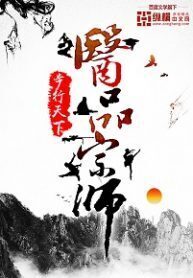Chapter 100: The Final Assault
Early the next morning, just as the sun began to rise, General Delacroix's troops had finished their breakfast and were forming up for battle. Meanwhile, Napoleon, on his part, had already learned of the enemy's movements and was observing them closely from a vantage point using a spyglass.
This vantage point was a castle just outside the city of Le Mans, a relic from the Hundred Years' War, where French knights may have once clashed with English longbowmen many years ago. Although the castle had long fallen into disrepair, its sturdy stone walls were still standing, offering a commanding view of the surroundings. Napoleon had chosen it as his command post because of the excellent visibility it provided.
"It seems the rebels are preparing for a final assault today," Napoleon remarked as he handed the spyglass to a nearby aide, speaking to himself.
Then, he looked towards the direction of the front lines and muttered, "Today should be our turn to launch the final assault."
At that moment, a glint of light could be seen in the distance on the rebels' side. It was the rebels firing artillery towards Le Mans.
In this era, cannons primarily used solid projectiles, and their firepower was far less threatening than in later centuries. The rebel artillery was mainly aimed at the temporary defensive earthworks and obstacles constructed outside Le Mans. If these earthworks and obstacles were not sufficiently damaged, it would put Napoleon's troops at a disadvantage when they advanced.
The artillery bombardment continued for a considerable time, indicating that the rebels were truly committed to this battle, even under challenging logistical conditions.
By around eight o'clock, the rebel defenses the earthworks and obstacles outside Le Mans had been significantly damaged. The rebel soldiers began to advance.
One notable feature of the French army after the revolution was their extensive use of skirmishers. This was due to two main factors. First, the post-revolution French army had inadequate training, leading to a poor ability to execute complex formations on the battlefield. The other factor was the generally high morale of their soldiers.
The first factor meant that they had difficulty forming orderly lines, so they opted for smaller, more flexible formations. The second factor ensured that even without strict formations, their soldiers wouldn't scatter and run off the battlefield as soldiers from some other countries did (looking at you, Austria). While Archduke Charles recognized the advantages of skirmishers early on, the Austrian skirmishers often scattered to the winds.
In the earlier days of the Vende rebellion, when rebel morale was high, they primarily relied on skirmishers as well. However, in recent days, it became apparent that the Vende rebels no longer had such high morale. Once they scattered, they disappeared from the battlefield. You couldn't count on seeing them again until mealtime.
Therefore, in this final assault, General Delacroix had to abandon skirmish tactics due to inadequate training and transition to more traditional linear formations. At least, with soldiers in line formations, anyone trying to run could be disciplined immediately.This chapter is updated by nov(e)(l)biin.com
However, due to their limited training, the rebel formations were far from neat. They marched in long horizontal lines, not straight, creating a wavering front. Often, the line would break due to varying walking speeds.
These horizontal formations were evolved from square formations, changing from squares to rectangles and gradually elongating while narrowing. This transition was made to reduce the casualties from cannon fire and increase firepower when firing in volleys. However, in the current situation, the rebel formations showed a tendency to revert to a thicker formation, with a depth of up to six ranks.
This was done out of necessity. Thinner formations meant longer lines, making formation control more difficult. Furthermore, thicker formations prevented soldiers in the middle from easily fleeing or feigning death in battle, as the crowd behind would trample them.
However, this came at the cost of higher casualties when hit by artillery fire. Indeed, as they approached within 300 meters of the outermost fortifications, they started to take artillery fire. Unlike in previous battles, the artillery fire from the defenders was not only intense but also surprisingly accurate. The defender's artillery positions were seven to eight hundred paces behind them, yet this volley of fire was hitting the rebel formation accurately.
Except for a few shots, most cannonballs created bouncing shrapnel that pierced through the six layers of the rebel formation. In just one round of artillery fire, hundreds of rebels were killed or wounded. Such precision had not been seen in previous battles.
"That's right, we can't let them escape like this," Napoleon declared. "Soldiers, are you willing to follow me to eliminate these snakes and beasts so they can't harm our loved ones in the future?"
"We are willing!"
"We are willing!"
The soldiers' voices became a chorus of determination.
Napoleon was satisfied as he looked at the troops. He then imitated Dumas' stance, a move he had practiced privately for a long time, and with a tug of the reins, his horse reared up on its hind legs, lifting him into the air. He shouted, "Soldiers, follow me, onward!"
As the retreating rebels left General Delacroix in astonishment, he soon realized that things were taking a dire turn. The disorganized rebels were rushing back towards their camp, and the enemy was seizing the opportunity to chase them down. What was even more alarming was that the enemy's numbers exceeded his expectations. He understood that the situation was critical. If he couldn't halt the retreating troops, and the enemy breached the camp, his army would collapse entirely.
"Retract the drawbridge, open fire on the routed troops, drive them to the side!" General Delacroix shouted.
Soldiers frantically withdrew the drawbridge and took cover behind the breastwork. Rebel soldiers who had retreated to the trench were frantically pleading to be let in, while their comrades inside the camp raised their guns to allow them entry. Some jumped into the trench, attempting to enter the camp.
"Fire! Fire!" General Delacroix ordered.
Bang! Bang!... Gunshots filled the air, and thick blue-gray gun smoke quickly enveloped the area. In no time, visibility became severely limited.
Bang! Bang!... Rebel forces outside the walls also opened fire, and several rebels fell to the ground with agonizing cries.
Moments ago, these people had been comrades, but now, they were blindly shooting at each other in the chaos of the gun smoke. After a while, the gunshots gradually subsided.
"Have those outside run away?" General Delacroix thought, squinting as he tried to peer through the dense gun smoke to see what was happening. But there was no wind on the battlefield to disperse the thick smoke, and he couldn't make out what was beyond it. However, he suddenly felt the ground shaking, and the rapid sound of galloping hooves reached his ears.
"It's cavalry," General Delacroix yelled, "Prepare..."
At that moment, a spirited horse burst through the gun smoke, leaping over the trench and then the breastwork. The rider raised his sword and expertly cut down a dumbfounded rebel soldier.
....
Hello there! We've just hit the fantastic milestone of 100 Chapters. Your invaluable feedback and ratings mean the world to me. Please take a moment to rate this novel at Novelupdate.







